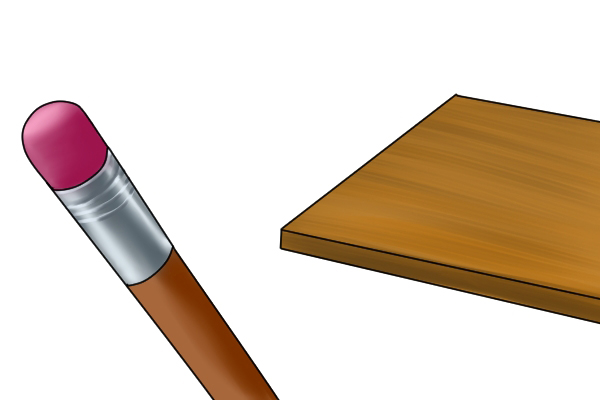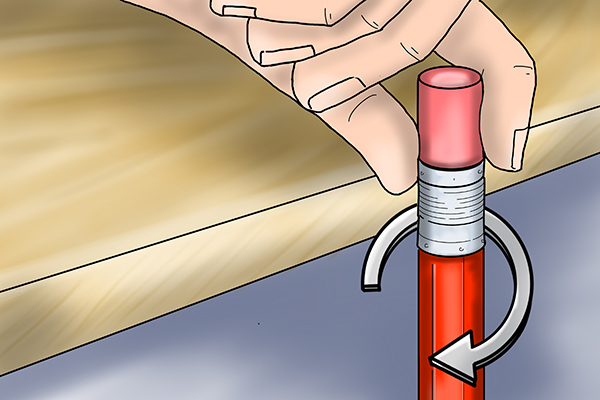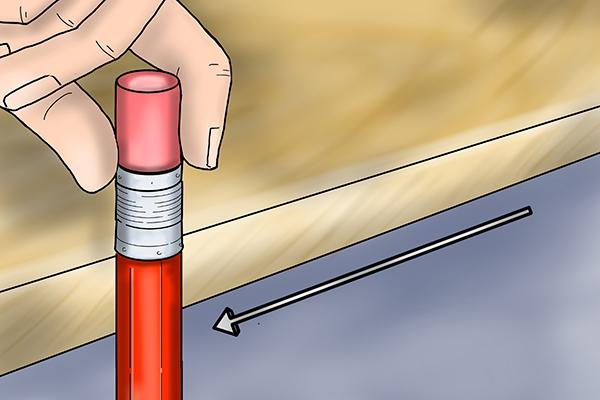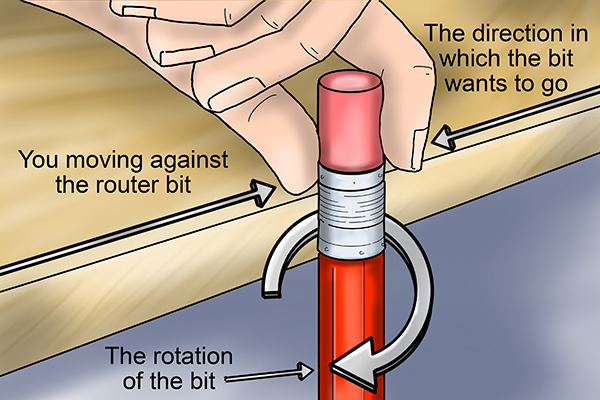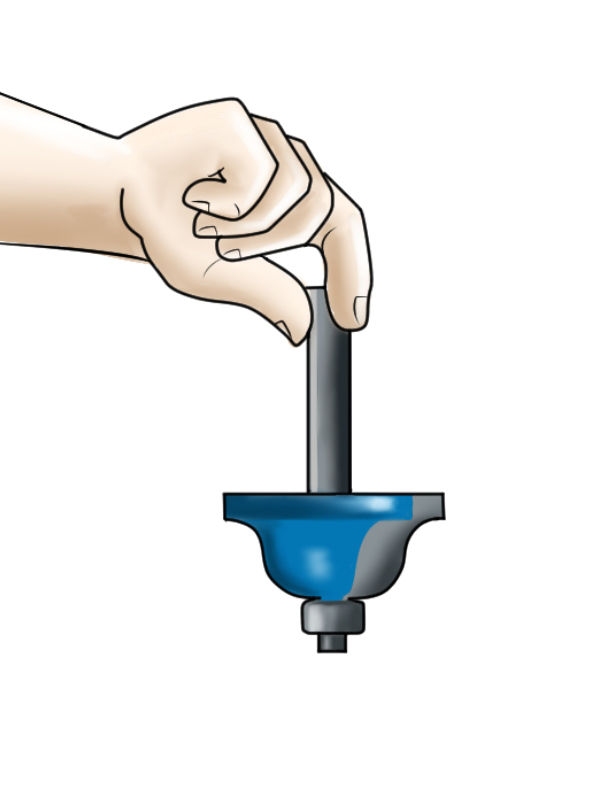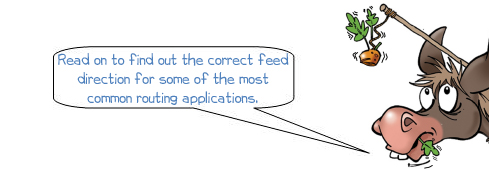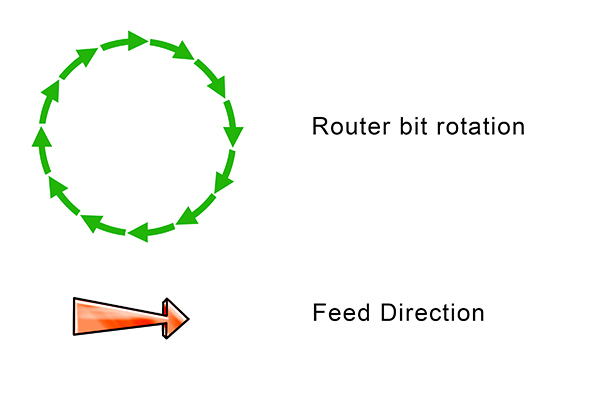What is the feed direction? |
||||
 |
||||
Hand-held routing |
||||
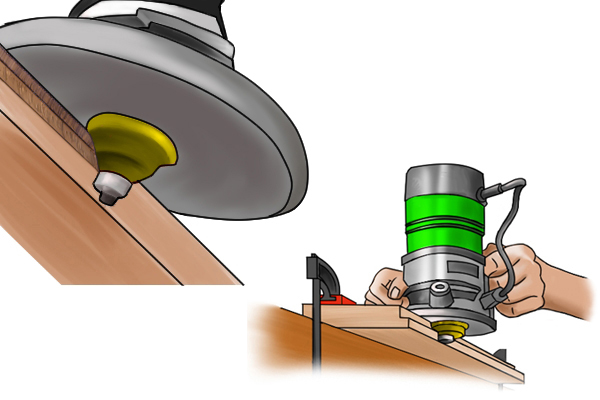 |
For hand-held routing applications, the feed direction refers to the direction in which the router bit is fed into the material.
In a hand-held router, the router bit spins in a clockwise direction, so the feed direction will usually be from left to right. |
|||
Stationary routing |
||||
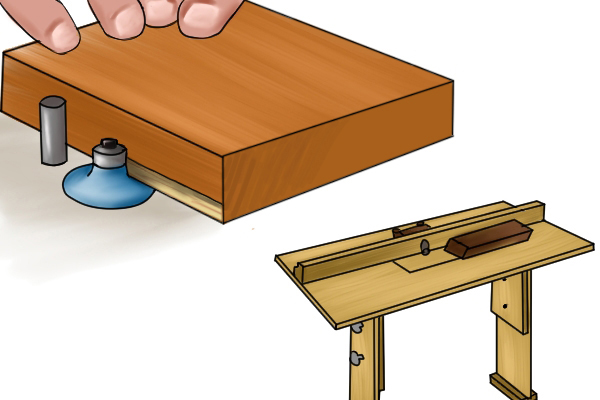 |
Using a router in a table or mounted in a bench top, the feed direction refers to the direction in which you feed the material against the router bit.
Stationary routing involves the bit being positioned upside down in the table, with the cutting edges facing upwards.
As a result, the bit spins in an anti-clockwise direction and so the feed direction will usually be from right to left. |
|||
What happens if you feedin the wrong direction? |
||||
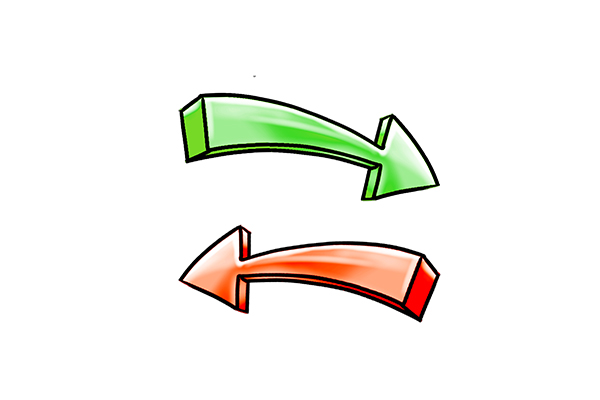 |
The correct feed direction is always against the rotation of the router bit. |
|||
Using a hand-held router |
||||
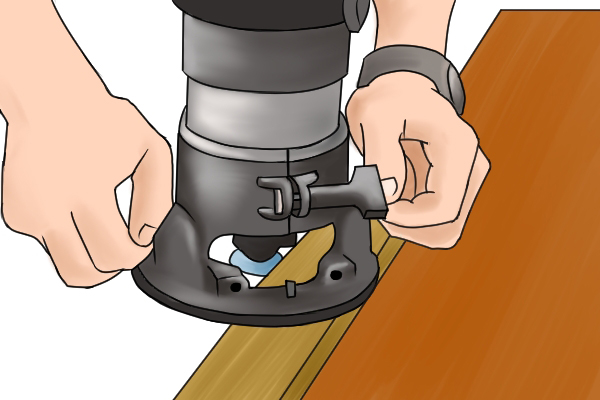 |
Feeding in the wrong direction when using a hand-held router will cause the bit to push itself (and the router) away from the edge it is supposed to be cutting.
This will make the router difficult to control and will usually leave an uneven and messy-looking edge. |
|||
Using a stationary router |
||||
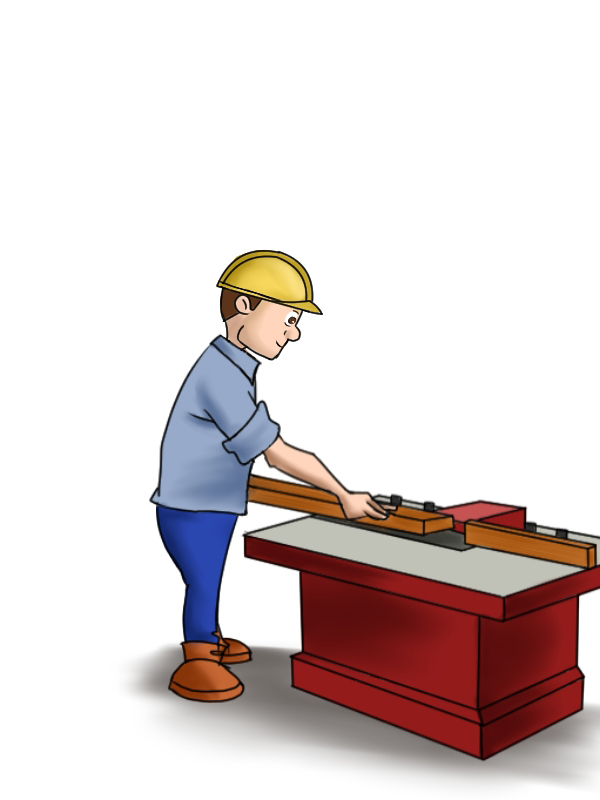 |
Feeding in the wrong direction is especially dangerous when using a stationary router such as a router mounted in a table.
Feeding with the rotation of the bit will cause it to pull the material out of the user’s hands. This is because the cutting edges do not have the chance to bite into the material and cut properly, they simply drag the material across the surface of the table/bench top.
If your grip on the material is tight, your hands will also be pulled towards the cutting edges of the router bit! |
|||
 |
||||
Router feed direction |
||||
What is the correct feed direction for hand-held routing? |
||||
Routing along an edge |
||||
|
|
When routing along an outside edge using a hand-held router, you should always work from the left to the right, against the rotation of the router bit.
Feeding in the right direction allows the router bit to pull itself (and the router) up against the edge of the material, creating a smoother cut. |
|||
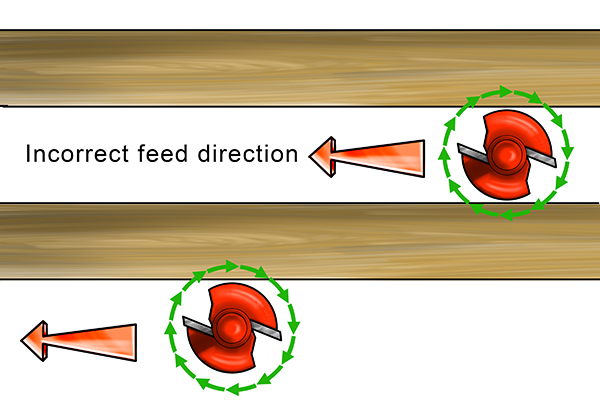 |
Routing from right to left on an outside edge may be OK if you’re an experienced user and only making very shallow cuts, but most of the time it will cause problems. |
|||
Routing inside edges |
||||
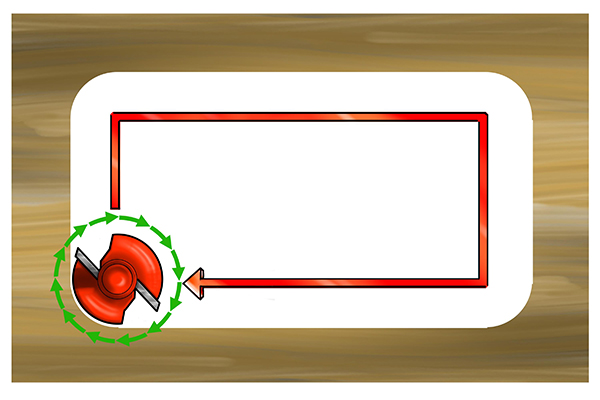 |
This may look complicated, but don’t panic, just remember the pencil analogy - if you rotated the bit clockwise, which way would it want to move across the material? Then rout in the opposite direction.
When routing along the inside edges of a piece of material, you should work in a clockwise direction. |
|||
Routing outside edges |
||||
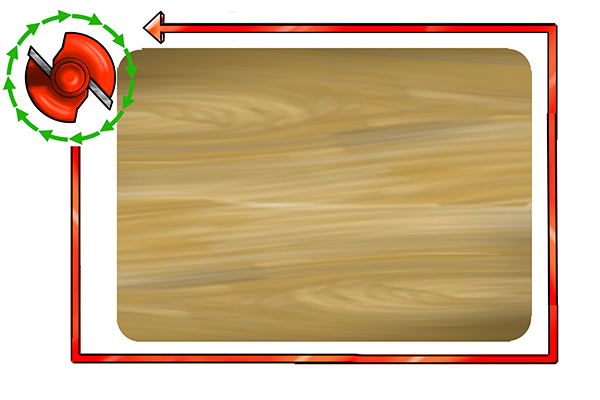 |
When routing all the way around the outside of a material, move the router in an anti-clockwise direction. |
|||
Routing a circle or arc |
||||
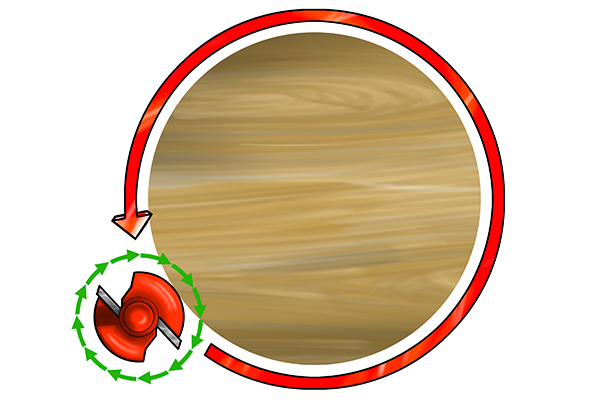 |
When routing an arc or circle with a hand-held router, you should always move in an anti-clockwise direction.
This is usually done with the aid of a beam trammel, which is a type of routing aid known as a jig, that works in the same way as a compass, helping to rout curves or circles. |
|||
Routing a groove through material |
||||
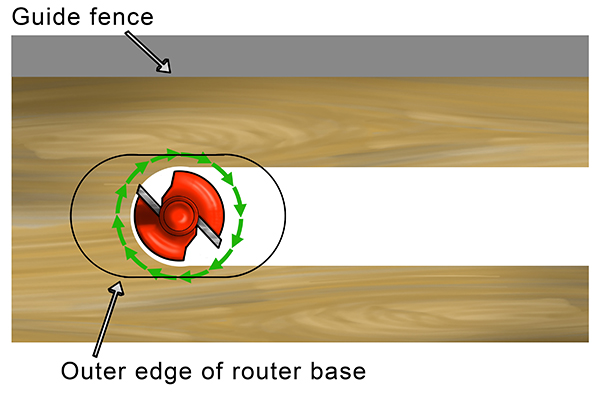 |
When routing a groove through the middle of a workpiece, there is always going to be material on both sides of the router bit, so what is the correct feed direction? Well, technically there isn't one, as the router is always moving with and against its own rotation at the same time.
However, if you’re using a guide/side fence, routing left to right will mean the bit is always pulling the router against the fence, keeping your cut on course. |
|||
Routing freehand |
||||
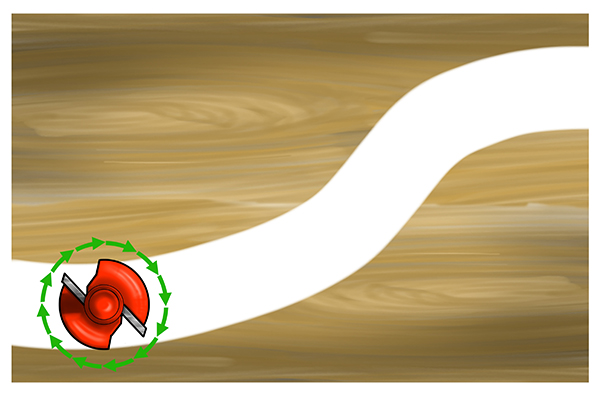 |
When cutting a pattern freehand, you can move in any direction through the middle of the material, as the router bit is cutting two edges anyway.
However, try not to change the feed direction abruptly at any point, smooth movements will produce a much cleaner finish. |
|||
What is the correct feed direction for stationary routing? |
||||
Routing an outside edge |
||||
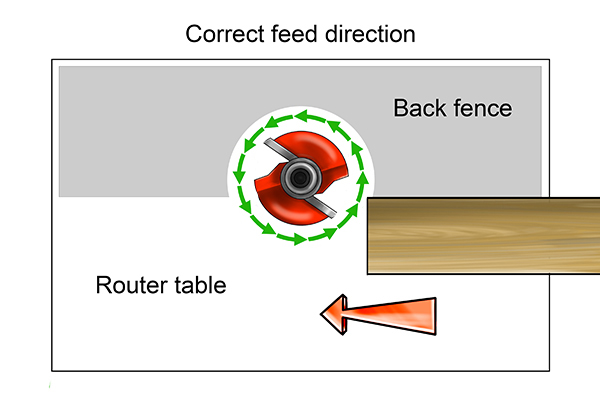 |
When routing an outside edge with a stationary router, you should feed the material from right to left. |
|||
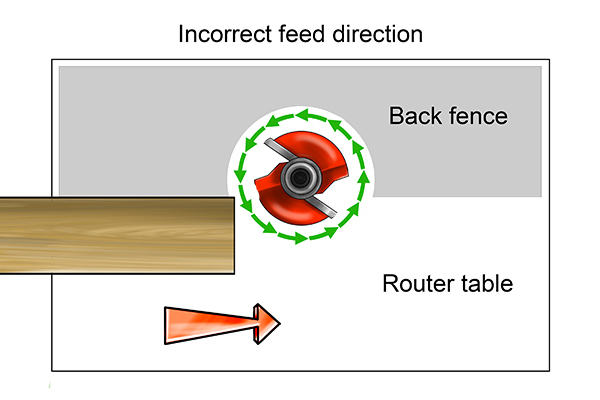 |
Routing from left to right may be ok if you’re an experienced user and only making very shallow cuts, but most of the time it will cause the bit to drag the material out of your hands! |
|||
Routing a groove through material |
||||
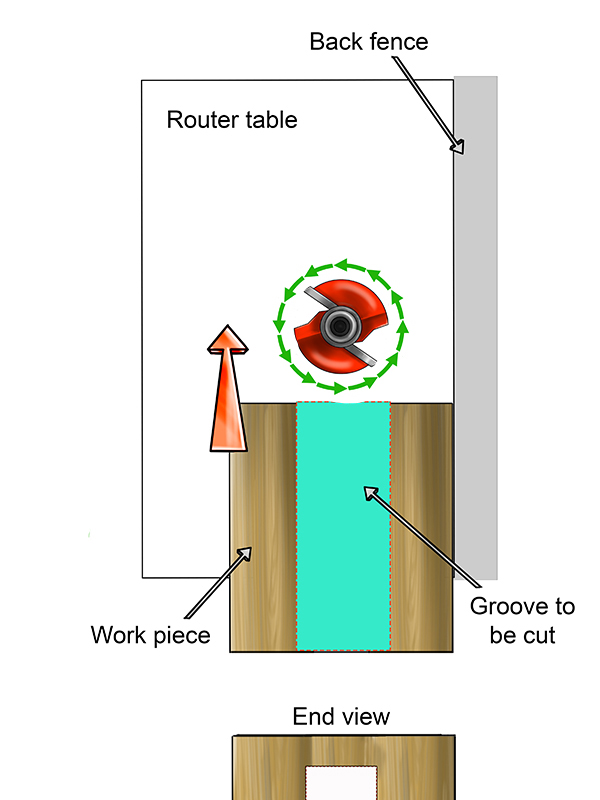 |
When routing a groove through the middle of a workpiece, there is always going to be material on both sides of the router bit, so what is the correct feed direction?
Well, technically there isn't one, as the router is always cutting with and against its own rotation at the same time.
However, if you’re using a guide fence, routing right to left will mean the bit is always pulling the router against the fence, keeping your cut on course. |
|||







